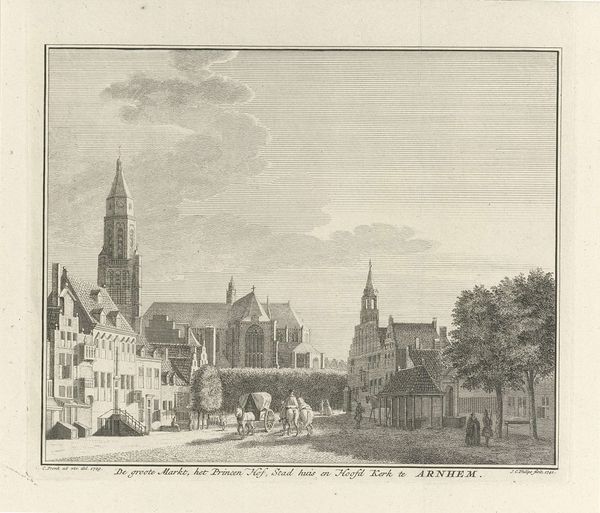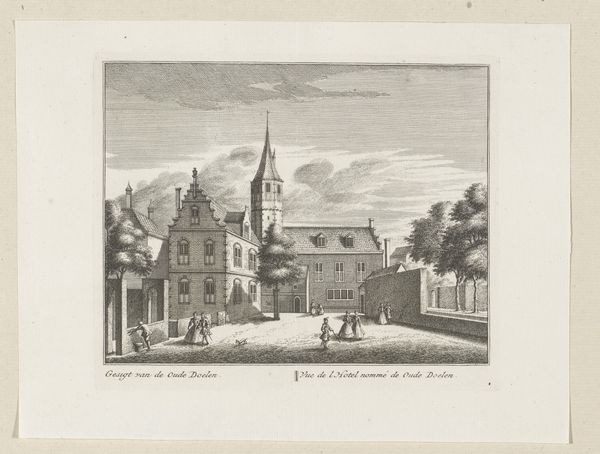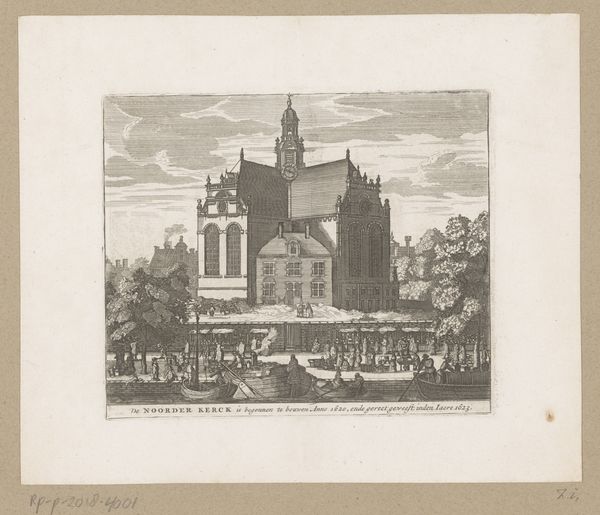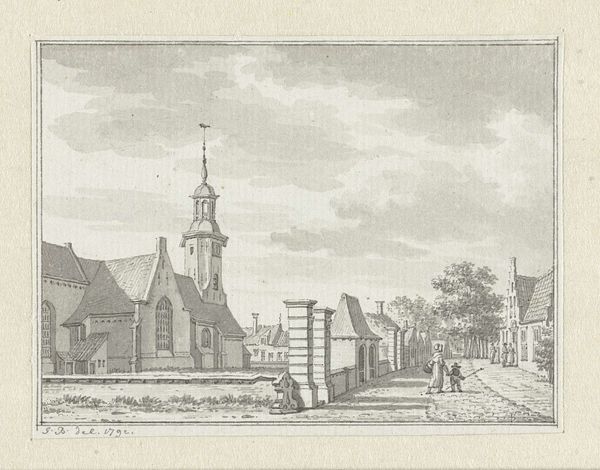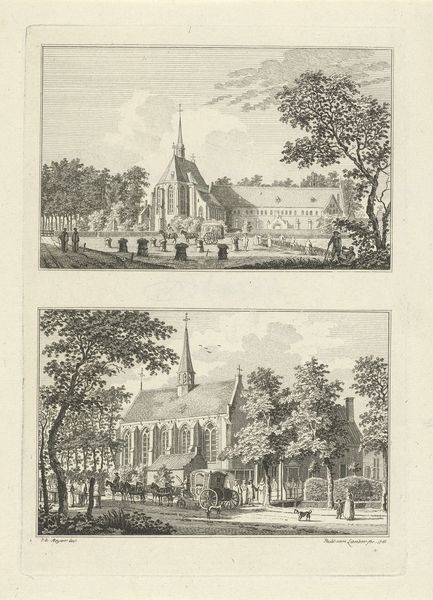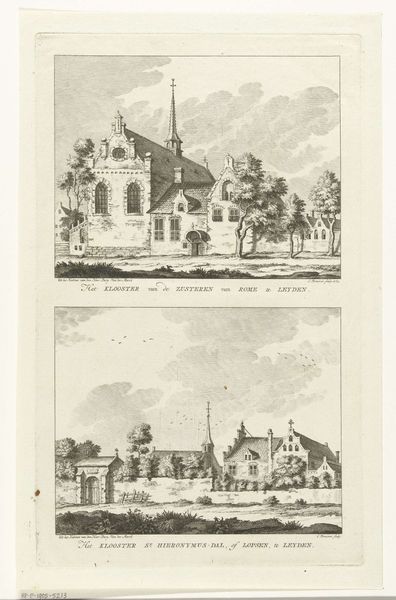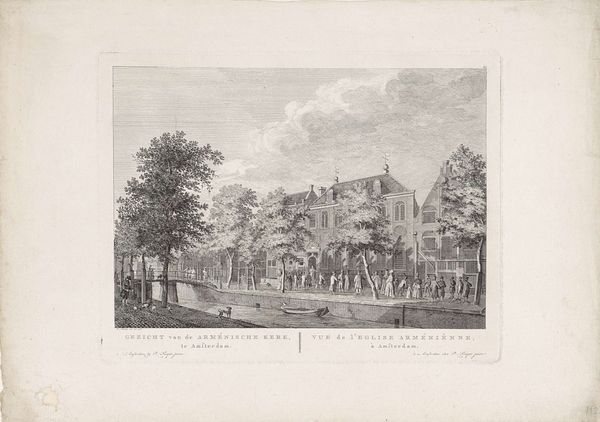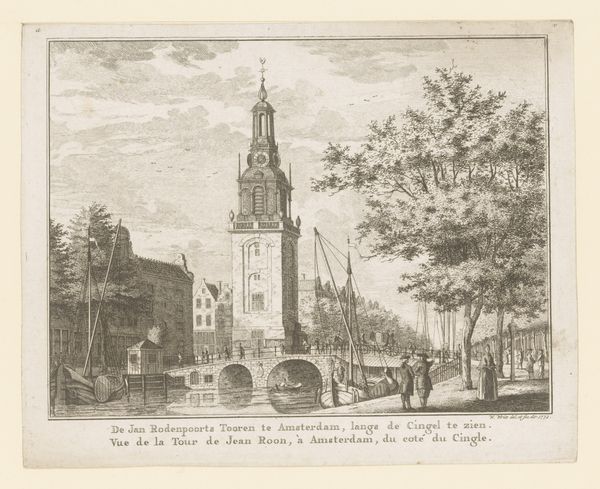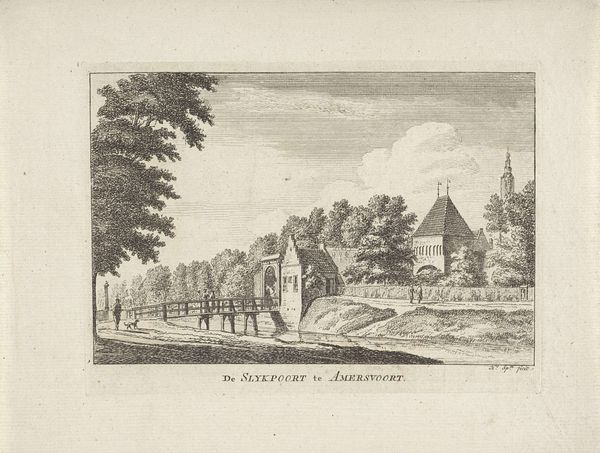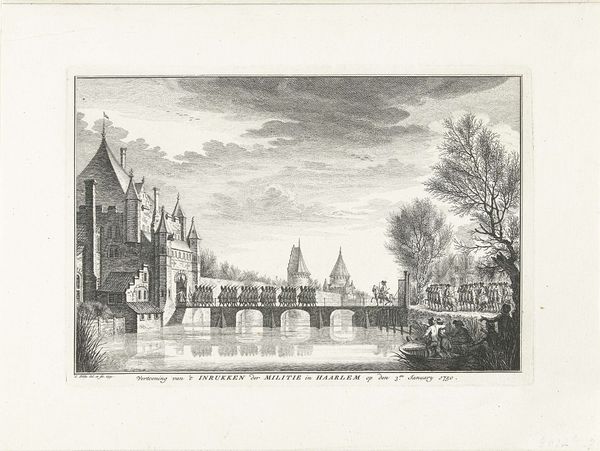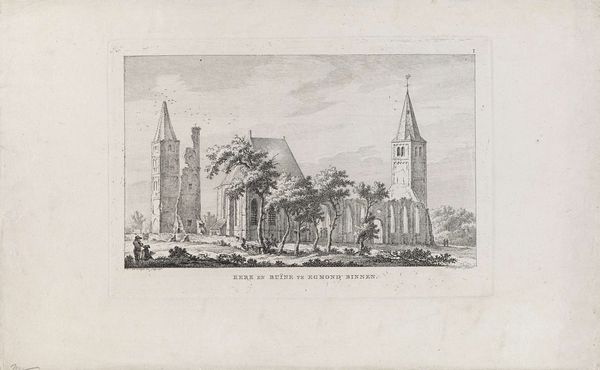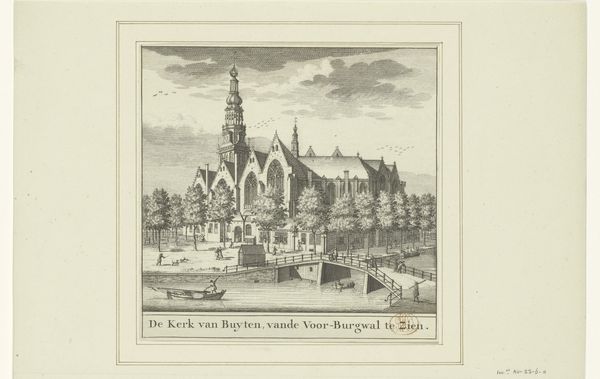
print, engraving
#
baroque
#
dutch-golden-age
# print
#
old engraving style
#
cityscape
#
engraving
Dimensions: height 153 mm, width 186 mm
Copyright: Rijks Museum: Open Domain
Curator: Here we have an engraving from 1754, "Gezicht op het stadhuis te Franeker" – "View of the Town Hall in Franeker." The artist, unfortunately, is unknown, though he's preserved a striking image of daily life, now held at the Rijksmuseum. Editor: It feels so…still. Not in a peaceful way, but almost frozen. Like a stage set, meticulously crafted but lacking spontaneity. Everything's so symmetrical. Curator: I think that "frozen" feeling speaks to the printmaking process itself and its intended audience. Engravings like this circulated widely, fixing images of civic pride, projecting power and permanence. Note the almost geometrical precision, the ordered composition--reflecting the Enlightenment's focus on reason and control. It almost suggests an idealized civic structure that is aspirational. Editor: Yes, the meticulous detail – the individual bricks, the texture of the trees, those figures milling about. The town hall looms large; but look closer—every character plays its carefully designated role. The boats transporting goods on the canal. Are these figures symbols or signs in this cityscape? What purpose do they have? Curator: They point to Franeker's function as a vibrant hub for trade and exchange in Friesland, reflecting both Dutch Golden Age aesthetics and also the emerging Baroque tastes. The very presence of people—whether fishermen, traders, and those that just reside nearby, tells us how important this governing center would be for this town. There are intersecting systems between power and societal dependency. Editor: You're right, I get this powerful tension here. On the one hand, this stately town hall projecting confidence. But there's a mundane bustle, reminding us of everyday lives that depend upon its power, yet perhaps operate at its margins, or outside the walls and structure we can’t see here in this piece. It would be nice to analyze these concepts. Curator: It reminds us of the function art has had throughout history, creating a reflection of place and time. By better understanding these prints, the more knowledge is afforded about gender, societal norms, political and social identities. Editor: Absolutely. These small frozen snapshots open doors to worlds we can enter. From them, there is much to observe and gain.
Comments
No comments
Be the first to comment and join the conversation on the ultimate creative platform.
